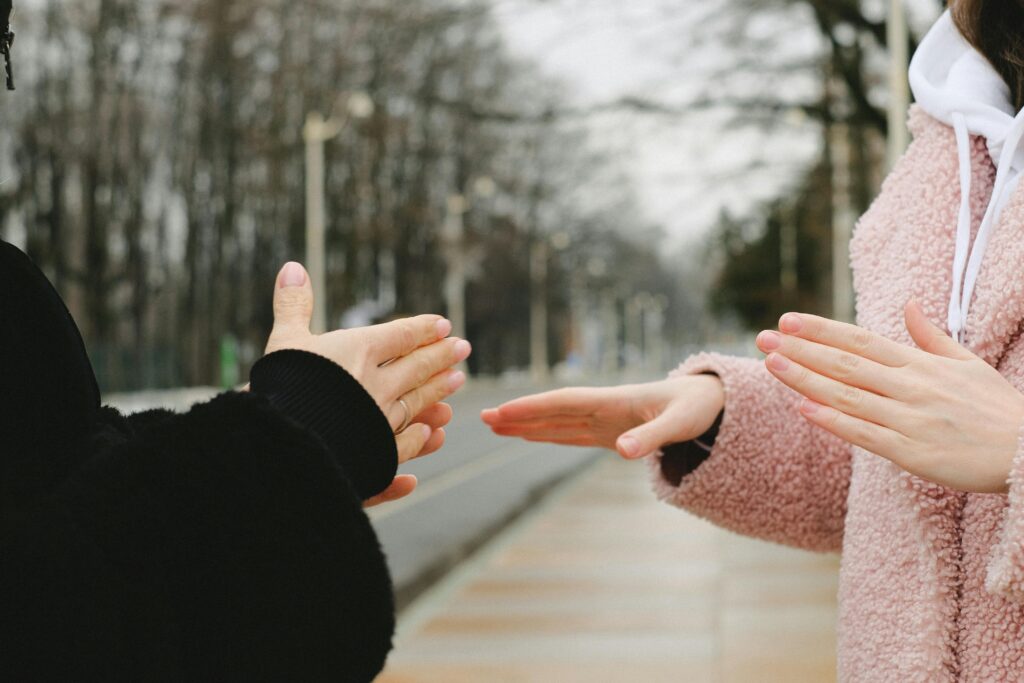
Body language is a silent symphony that we all perform, often without even realizing it. From the subtle tilt of the head to the firmness of a handshake, these non-verbal cues convey volumes about our thoughts, feelings, and intentions.
Understanding and mastering body language can significantly enhance communication, relationships, and even personal success.
Here’s a guide to some essential body language cues that every person should know:
1. Eye Contact: The eyes are often referred to as the windows to the soul, and for good reason. Sustained eye contact indicates confidence, sincerity, and engagement. Conversely, avoiding eye contact can suggest discomfort, dishonesty, or disinterest. Strive for a balance – maintain eye contact without staring to create a connection while respecting personal boundaries.
2. Posture: Your posture speaks volumes about your self-assurance and assertiveness. Standing tall with shoulders back exudes confidence and commands respect. Conversely, slouching or crossing your arms can signal defensiveness or insecurity. Aim for an open, upright posture to convey confidence and approachability.
3. Gestures: Gestures can amplify or contradict your spoken words. For instance, nodding along with someone shows agreement and active listening, while excessive fidgeting may imply nervousness or impatience. Be mindful of your gestures and ensure they align with the message you intend to convey.
4. Smile: A genuine smile is one of the most powerful forms of non-verbal communication. It signifies warmth, friendliness, and approachability. A smile can instantly put others at ease and foster a positive connection. Remember to smile sincerely, as forced or insincere smiles can be perceived as disingenuous.
5. Handshake: A firm, confident handshake is often the first physical interaction in a social or professional setting. It conveys trust, competence, and professionalism. Aim for a handshake that is neither too limp nor too aggressive, maintaining eye contact and a genuine smile throughout.
6. Mirroring: Mirroring involves subtly mimicking the body language of the person you’re interacting with. This can create a sense of rapport and mutual understanding. Pay attention to the other person’s gestures, posture, and tone of voice, and adjust your own accordingly.

7. Personal Space: Respect for personal space varies among individuals and cultures. Invading someone’s personal space can be perceived as intrusive or aggressive, while standing too far away may signal detachment or disinterest. Maintain a comfortable distance based on the context and cultural norms.
8. Facial Expressions: Your face is a canvas of emotions, expressing joy, sadness, anger, and everything in between. Pay attention to your facial expressions, ensuring they align with the message you wish to convey. A genuine smile, raised eyebrows of interest, or furrowed brows of concern can all enhance communication.
9. Voice Tone and Volume: The tone and volume of your voice convey emotions and attitudes that can either complement or contradict your words. A calm, steady tone exudes confidence and authority, while a high-pitched or shaky voice may betray nervousness. Adjust your voice to match the mood and message of the conversation.
10. Leg and Feet Positioning: Even when seated, your legs and feet can reveal underlying emotions and intentions. Crossed legs may indicate defensiveness or reservation, while open, relaxed legs signal comfort and openness. Pay attention to the direction your feet point, as they often subconsciously align with your interest or desire to leave a conversation.
Mastering the language of the body takes time, observation, and practice. By becoming more attuned to these subtle cues, you can enhance your communication skills, build stronger relationships, and navigate social interactions with confidence and grace. Remember, it’s not just what you say, but how you say it that truly matters.